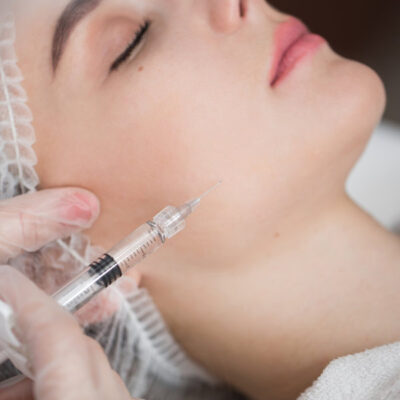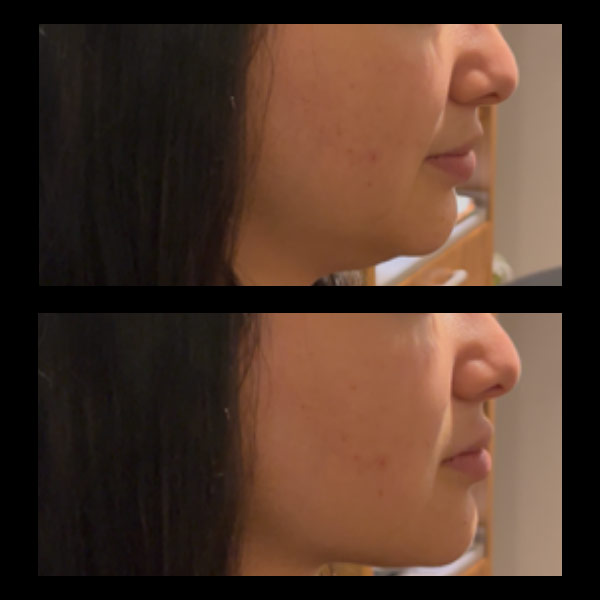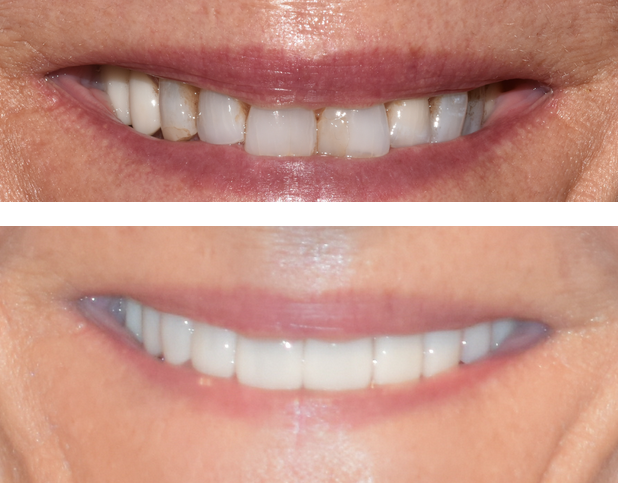 Botox has become increasingly recognized for its therapeutic and cosmetic applications, recently in the realm of dental treatments. However, there are several myths and misconceptions surrounding its use. Primarily notable for its ability to smooth out wrinkles, Botox for dentistry also offers significant benefits in managing conditions such as chronic migraines, TMJ disorders, and Bruxism, among others.
Botox has become increasingly recognized for its therapeutic and cosmetic applications, recently in the realm of dental treatments. However, there are several myths and misconceptions surrounding its use. Primarily notable for its ability to smooth out wrinkles, Botox for dentistry also offers significant benefits in managing conditions such as chronic migraines, TMJ disorders, and Bruxism, among others.
At Incredible Smiles, we believe in educating our guests by dispelling these myths. Our goal is to empower you with the necessary information to determine if Botox could be a suitable treatment option for your dental and aesthetic needs.
Myth 1: Botox is Only for Cosmetic Purposes
The perception that Botox is exclusively for enhancing appearance is a widespread inaccuracy. In the field of dentistry, Botox has significant therapeutic applications, notably in treating some symptoms associated with Temporomandibular Joint (TMJ) Disorders . Patients suffering from TMJ disorders often experience distressing symptoms such as headaches and jaw pain. Botox works by calming the hyperactive muscles associated with these symptoms, and in many cases provides considerable relief.
In addition to TMJ, Botox proves beneficial in addressing Bruxism, a condition characterized by teeth grinding or clenching. Persistent grinding can lead to tooth damage, and in severe cases, tooth loss. By easing the tension in the muscles that contribute to grinding, Botox effectively reduces both the frequency and intensity of Bruxism episodes. This makes it a valuable tool in enhancing not only dental health but also overall comfort.
Myth 2: Botox Treatments are Painful
The apprehension that Botox treatments are painful is a common concern, leading many to avoid considering it as an option. However, this fear is largely unfounded, especially in the context of dental applications. In fact, Botox procedures in dentistry are known for being almost entirely pain-free. The process involves using a very fine needle to precisely inject Botox into specific muscles. Most of our guests at Incredible Smiles liken the sensation to that of a minor mosquito bite.
Dr. Uppal’s extensive knowledge of facial anatomy plays a crucial role in ensuring that Botox injections are not only accurate but also administered with a gentle touch, minimizing any discomfort. At Incredible Smiles, we employ various techniques such as the application of topical anesthetics (no syringes needed!), ice, therapeutic massage, and distraction methods to alleviate any potential discomfort during the procedure. These measures contribute significantly to the overall ease and comfort of the experience.
Myth 3: Botox Results are Permanent
Contrary to popular belief, Botox results are not perpetual. Botox treatments only offer temporary relief, with effects diminishing gradually over time.
When Botox is used for dental and muscular treatments, the duration of effectiveness typically spans between 3-6 months. During this time, the muscles treated remain relaxed, alleviating symptoms of conditions such as TMJ disorders and bruxism. After time, these effects begin to fade and muscles gradually regain their normal functionality.
Interestingly, for some, the benefits of Botox have led to prolonged symptom relief, even after the Botox has worn off. In some cases, repeated Botox treatments can lead to an overall reduction in the strength of the muscle over time.
The non-permanent nature of Botox allows dentists the flexibility to adjust the treatment plan based on each patient’s unique response. Should a patient find relief, they may opt for ongoing Botox treatments. Conversely, if the treatment does not align with their expectations, alternative therapeutic options can be explored.
Myth 4: Botox is Unsafe with Severe Side Effects
Contrary to some persnickety misconceptions, Botox has a remarkable safety record, particularly when handled by a skilled and experienced professional. In reality, Botox has a well-established safety record, especially when used in the controlled doses typical of both cosmetic and therapeutic dental treatments. The most common side effects are generally mild and transient, such as slight bruising or redness at the injection site. Severe reactions are remarkably rare.
It is crucial for patients to seek treatment from reputable professionals, who have the requisite knowledge of facial anatomy and experience in administering Botox. When done correctly, the risks associated with Botox are minimal, making it a safe option for many patients seeking relief from various dental and aesthetic concerns.
Myth 5: Any Dentist Can Administer Botox
Not all dentists are trained to administer Botox. Specialized training is mandatory for dentists to offer this service, ensuring they understand the nuances of dosage, injection techniques, and possible complications. This training is vital to the safe and effective use of Botox, reducing the risk of adverse side effects.
Dr. Priya Uppal has extensive training and experience in Botox administration for dental applications, adeptly treating conditions such as bruxism and “gummy” smiles. Her proficiency in this specialized field couples with a deep understanding of facial anatomy and a gentle approach, ensuring patient comfort and effective results.
Myth 6: Botox is a Substitute for Traditional Dental Treatments
A common misconception is that Botox can replace traditional dental treatments. However, in the context of dentistry, Botox is primarily used as an adjunctive therapy, not a replacement for conventional dental procedures.
Its role is to complement and enhance traditional treatments, particularly in managing conditions related to muscle tension and activity, such as TMJ disorders or bruxism. While Botox for dentistry can be incredibly effective in providing symptomatic relief and improving certain conditions, it does not address underlying dental issues like cavities, gum disease, or tooth decay. This dual approach offers greater comfort and increases the effectiveness of the treatment.
Myth 7: Botox Results in an Unnatural Look
One common misbelief about Botox is the ‘frozen’ look it creates. And while this can be seen if overused, properly administered Botox subtly enhances your natural features and aids in dental-related treatment without drastically altering your appearance. It relaxes specific muscles, preserving your ability to express emotions and maintain a natural look.
The notorious ‘frozen’ face is typically the result of excessive or incorrect application of Botox, rather than an inherent issue with Botox itself. Experienced professionals who are adept in Botox administration avoid this by using only the necessary amount of Botox required for effective treatment, ensuring a more natural and expressive outcome.
Myth 8: Botox is Only for Wrinkles
Botox’s utility extends far beyond its cosmetic role in smoothing wrinkles, particularly in the field of dentistry. It plays a crucial role in managing muscular tension related to conditions like Temporomandibular Joint Disorders (TMJ) and bruxism, which involves involuntary teeth grinding or clenching. Additionally, Botox is effective in addressing cases of a gummy smile, where an overactive lip elevator muscle exposes excessive gum tissue. Moreover, it offers a solution for orthodontic relapse, a scenario where teeth gradually move back to their pre-braces position. By relaxing the strong muscle forces that contribute to this relapse, Botox helps in maintaining the alignment achieved through orthodontic treatment. This range of applications highlights Botox’s versatility in enhancing dental health and aesthetics.
Myth 9: Botox is Addictive
Addiction is characterized by a compulsive, chronic, physiological or psychological need for a habit-forming substance or behavior. Botox does not actually cause a chemical dependency in the body, like addictive drugs do.
Botox treatments function by temporarily obstructing nerve signals to certain muscles, causing them to relax. So, why do people persist with Botox treatments? The reason is simple–they’re satisfied with the results. Many individuals enjoy the benefits of Botox and decide to preserve these improvements. Moreover, those using Botox for cosmetic purposes often appreciate the enhancement in their appearance and opt to continue treatments to maintain their preferred look. However, enjoying the effects of Botox and opting to continue treatments does not equate to addiction. It’s a decision based on satisfaction with the results, not a chemical dependency.
Myth 10: The Results of Botox are Immediate
Many people mistakenly believe that Botox results are immediate. In reality, the effects of Botox, particularly in dental applications, develop gradually over time. Following Botox injections, it typically takes several days to a week for the initial effects to become noticeable. The full impact of the treatment usually sets in after about two weeks. This gradual onset is due to the time Botox takes to effectively relax the targeted muscles and reduce symptoms of conditions like TMJ disorders or bruxism. Expecting instant results can lead to misunderstandings about the efficacy of the treatment. Patients are advised to have patience and allow the necessary time for Botox to work, ensuring they can accurately assess its benefits for their specific dental concerns.
Get the Facts on Botox for Dentistry
The role of Botox for dentistry extends well beyond mere aesthetic improvements, offering substantial therapeutic benefits. It serves as an invaluable resource for addressing a range of dental issues. At Incredible Smiles, we place a high emphasis on educating our guests about these benefits. Under the expert guidance of trained professionals like Dr. Uppal, Botox is applied safely and effectively, ensuring optimal results. If you’re considering Botox for your dental needs, we invite you to schedule an appointment with us. Join us on a journey towards a healthier smile and enhanced comfort, where your well-being is our top priority.








